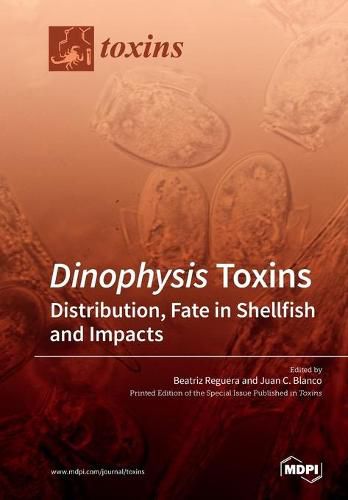Readings Newsletter
Become a Readings Member to make your shopping experience even easier.
Sign in or sign up for free!
You’re not far away from qualifying for FREE standard shipping within Australia
You’ve qualified for FREE standard shipping within Australia
The cart is loading…






This title is printed to order. This book may have been self-published. If so, we cannot guarantee the quality of the content. In the main most books will have gone through the editing process however some may not. We therefore suggest that you be aware of this before ordering this book. If in doubt check either the author or publisher’s details as we are unable to accept any returns unless they are faulty. Please contact us if you have any questions.
Several species of Dinophysis produce one or two groups of lipophilic toxins: okadaic acid (OA) and its derivatives; or the dinophysistoxins (DTXs) (also known as diarrhetic shellfish poisons or DSP toxins) and pectenotoxins (PTXs). DSP toxins are potent inhibitors of protein phosphatases, causing gastrointestinal intoxication in consumers of contaminated seafood. Forty years after the identification of Dinophysis as the causative agent of DSP in Japan, contamination of filter feeding shellfish exposed to Dinophysis blooms is recognized as a problem worldwide. DSP events affect public health and cause considerable losses to the shellfish industry. Costly monitoring programs are implemented in regions with relevant shellfish production to prevent these socioeconomic impacts. Harvest closures are enforced whenever toxin levels exceed regulatory limits (RLs). Dinophysis species are kleptoplastidic dinoflagellates; they feed on ciliates (Mesodinium genus) that have previously acquired plastids from cryptophycean (genera Teleaulax, Plagioselmis, and Geminigera) nanoflagellates. The interactions of Dinophysis with different prey regulate their growth and toxin production. When Dinophysis cells are ingested by shellfish, their toxins are partially biotransformed and bioaccumulated, rendering the shellfish unsuitable for human consumption. DSP toxins may also affect shellfish metabolism. This book covers diverse aspects of the abovementioned topics–from the laboratory culture of Dinophysis and the kinetics of uptake, transformation, and depuration of DSP toxins in shellfish to Dinophysis population dynamics, the monitoring and regulation of DSP toxins, and their impact on the shellfish industry in some of the aquaculture regions that are traditionally most affected, namely, northeastern Japan, western Europe, southern Chile, and New Zealand.
$9.00 standard shipping within Australia
FREE standard shipping within Australia for orders over $100.00
Express & International shipping calculated at checkout
This title is printed to order. This book may have been self-published. If so, we cannot guarantee the quality of the content. In the main most books will have gone through the editing process however some may not. We therefore suggest that you be aware of this before ordering this book. If in doubt check either the author or publisher’s details as we are unable to accept any returns unless they are faulty. Please contact us if you have any questions.
Several species of Dinophysis produce one or two groups of lipophilic toxins: okadaic acid (OA) and its derivatives; or the dinophysistoxins (DTXs) (also known as diarrhetic shellfish poisons or DSP toxins) and pectenotoxins (PTXs). DSP toxins are potent inhibitors of protein phosphatases, causing gastrointestinal intoxication in consumers of contaminated seafood. Forty years after the identification of Dinophysis as the causative agent of DSP in Japan, contamination of filter feeding shellfish exposed to Dinophysis blooms is recognized as a problem worldwide. DSP events affect public health and cause considerable losses to the shellfish industry. Costly monitoring programs are implemented in regions with relevant shellfish production to prevent these socioeconomic impacts. Harvest closures are enforced whenever toxin levels exceed regulatory limits (RLs). Dinophysis species are kleptoplastidic dinoflagellates; they feed on ciliates (Mesodinium genus) that have previously acquired plastids from cryptophycean (genera Teleaulax, Plagioselmis, and Geminigera) nanoflagellates. The interactions of Dinophysis with different prey regulate their growth and toxin production. When Dinophysis cells are ingested by shellfish, their toxins are partially biotransformed and bioaccumulated, rendering the shellfish unsuitable for human consumption. DSP toxins may also affect shellfish metabolism. This book covers diverse aspects of the abovementioned topics–from the laboratory culture of Dinophysis and the kinetics of uptake, transformation, and depuration of DSP toxins in shellfish to Dinophysis population dynamics, the monitoring and regulation of DSP toxins, and their impact on the shellfish industry in some of the aquaculture regions that are traditionally most affected, namely, northeastern Japan, western Europe, southern Chile, and New Zealand.